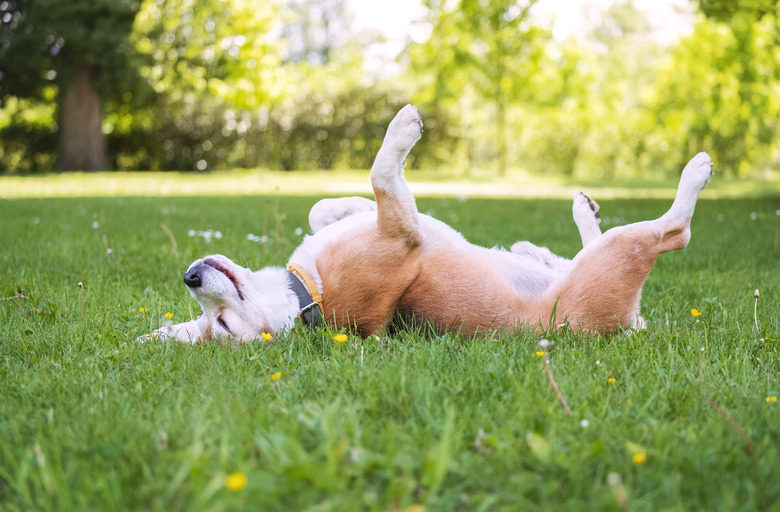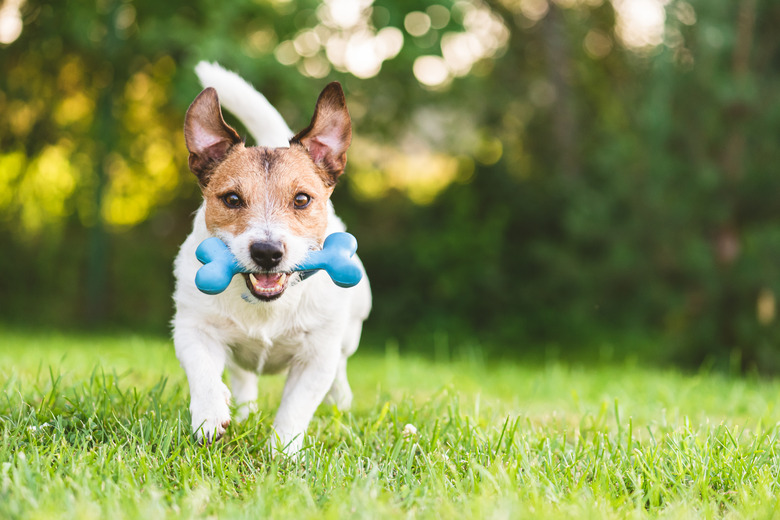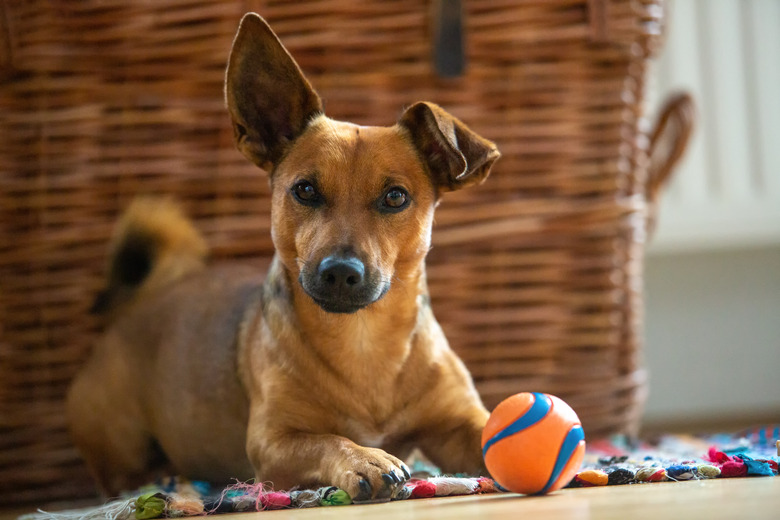How To Train Your Dog To Play By Himself
While it's extremely important to socialize your dog to interact with other dogs and humans, it's just as important to make sure your dog is happy when he's alone. If your dog or puppy won't play by himself when you're at work, at the grocery store, or outside the house for other reasons, he can develop anxiety, lethargy, and depression. Using a few tried-and-true techniques, you can help your dog develop the ability to play by himself when no one else is around and continue to be happy and healthy until you are back in the picture.
Encourage a dog to self-play
Encourage a dog to
self-play
Use toys that dogs can play with by themselves to get them into the habit of doing this. You can encourage your dog to do this by playing with her for a few minutes using another toy, introducing the new toy, and then sitting quietly while the dog plays with the toy. When the dog stops and looks at you or is finished, say "good girl!" and give her a caress to let her know that this type of activity is positive.
You might ask yourself, "At what age do puppies play by themselves?" Within weeks of playing with others, they can learn to play alone. You might say to yourself, "My dog only plays with toys when I'm home." You can leave your dog with toys when confined to a cage or room to encourage self-play. This makes the cage or other confined area seem more friendly than confining. You might also leave some treats.
Give him some space
Give
him some space
When possible, go outdoors or in the basement or garage so you can create some space between the two of you. For example, if you can sit on your deck while your dog plays out on the lawn, he's aware you are there and won't have separation anxiety. You can give him encouraging words while he's exploring hedges, chasing squirrels, or barking at birds. Using this method, the two of you are playing together while he's playing by himself.
Try edible chew toys when a puppy won't play
Try
edible chew toys when a puppy won't play
Toys with a treat inside keep dogs busy and active and help puppies learn to chew. These toys don't let a dog quickly empty them, so your dog might come back to the toy several times during the day. If you have a pet sitter who visits, ask her to check the toy to see if it's been used or emptied and if it needs to be refilled.
Provide a variety of toys
Provide a variety of toys
Make sure your dog has plenty of options for play toys. These can be as simple as a blanket she hides under or hides things under. Toys that move, such as a ball or toy on wheels, provide more fun.
Pets love to go into and through boxes, so keep a large cardboard box available. If possible, set up a small obstacle course your dog can navigate. Make sure the two of you play with the course first so she knows she's supposed to go up the stairs, through the box, and between the chairs or other items you're using.
Keep the curtains open
Keep
the curtains open
Depending on the view from your house or apartment, leaving drapes or blinds open lets your dog see what's happening in the outside world. This can exercise the dog's mind as he wonders who those people are or what those squirrels are up to or as he just watches leaves, raindrops, or snow falling. Even a slow-walking bug moving across your deck can provide many minutes of entertainment.
Be careful with electronics
Be
careful with electronics
Don't try leaving the TV or radio on or leaving white noise playing (like a gentle rolling surf or a rainstorm) without first seeing how it will affect your dog. If the sounds irritate the dog, she will feel trapped and become agitated. Introduce audio or video when you're around to see how she responds. If she likes them, try putting them on a timer and have the sounds or videos start when the two of you are in another room.
If she gets up and goes into that room and stays there, you might have found a babysitter. If possible, set the audio or video to go off for just 15 minutes or so in the event that your dog doesn't like it when you're gone.
You might try introducing some up-tempo music when you play to associate it with playtime. Use the same song each time you play. Later, when your dog is lying around, turn on your playtime music and see how she reacts. If she jumps up because she recognizes it's playtime, you've conditioned her. If you have the know-how, have the song play once in the morning and once in the afternoon to stimulate her desire to play with her toys.


